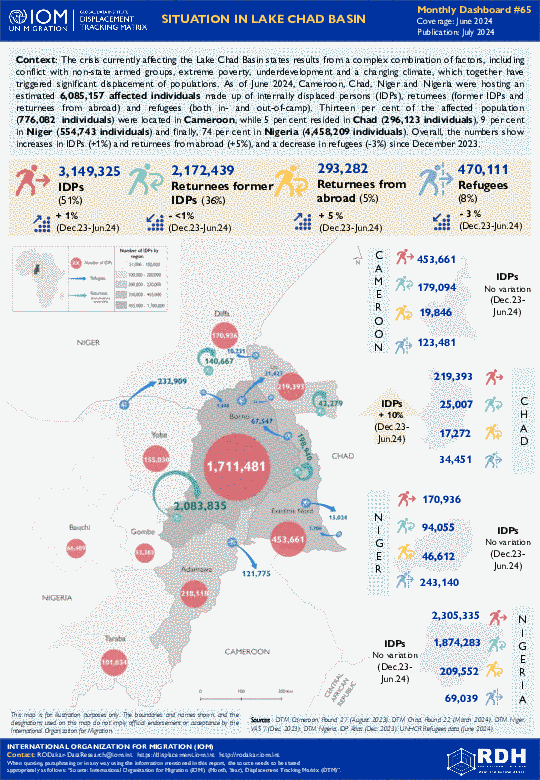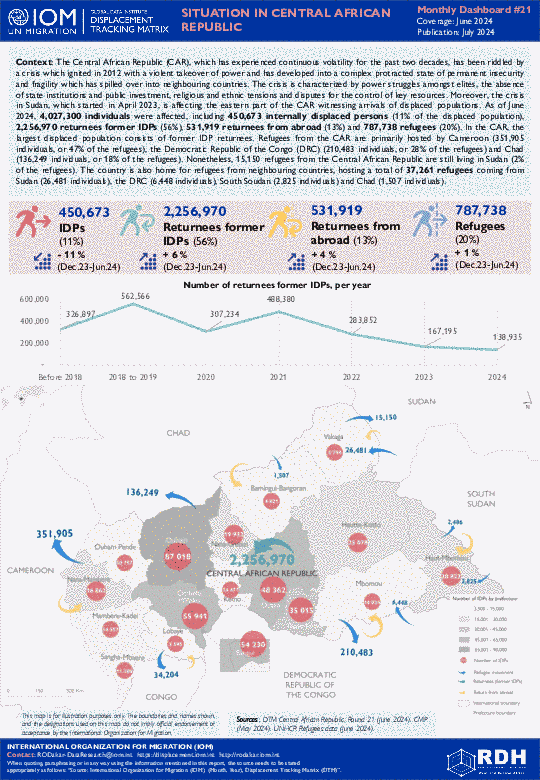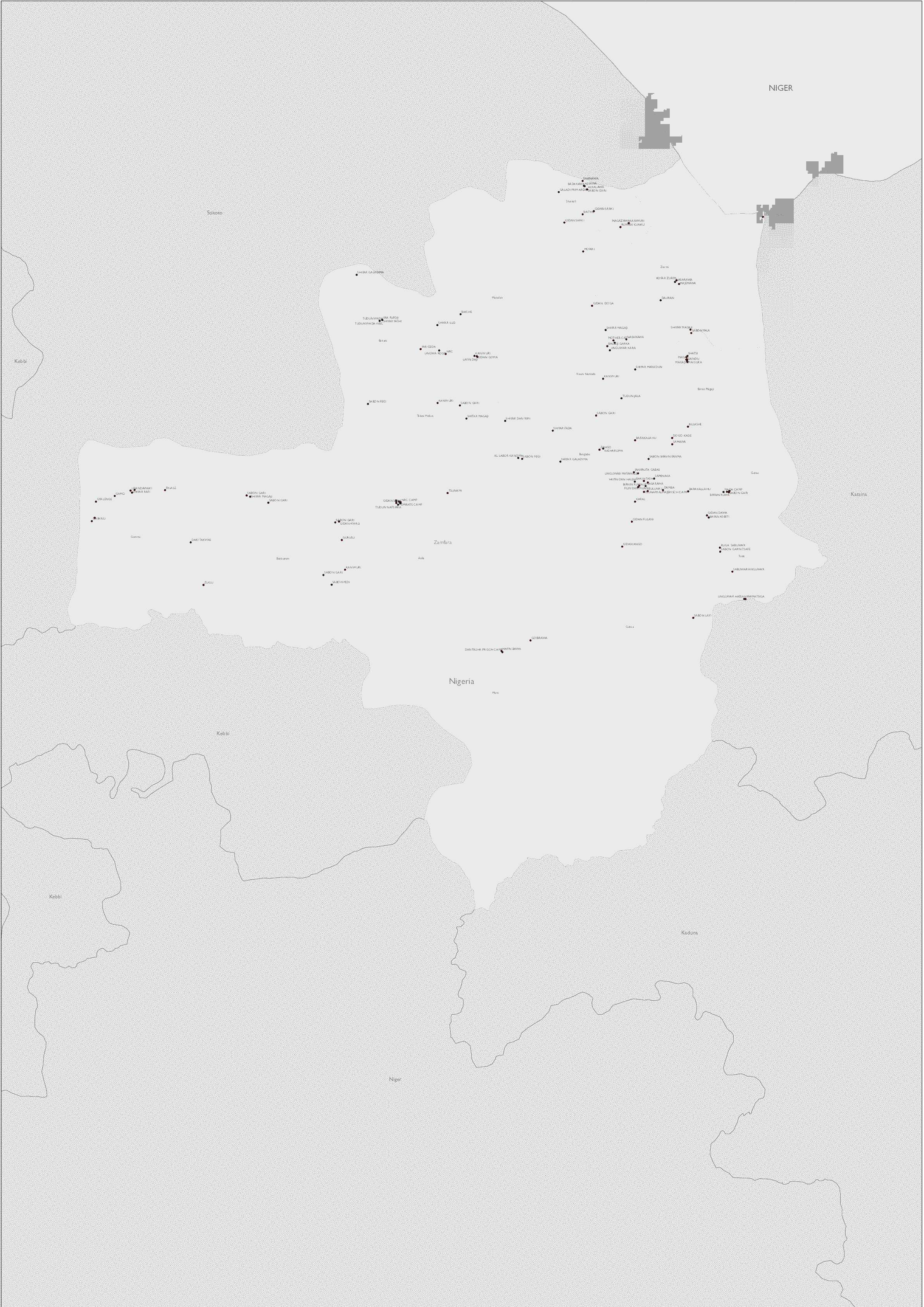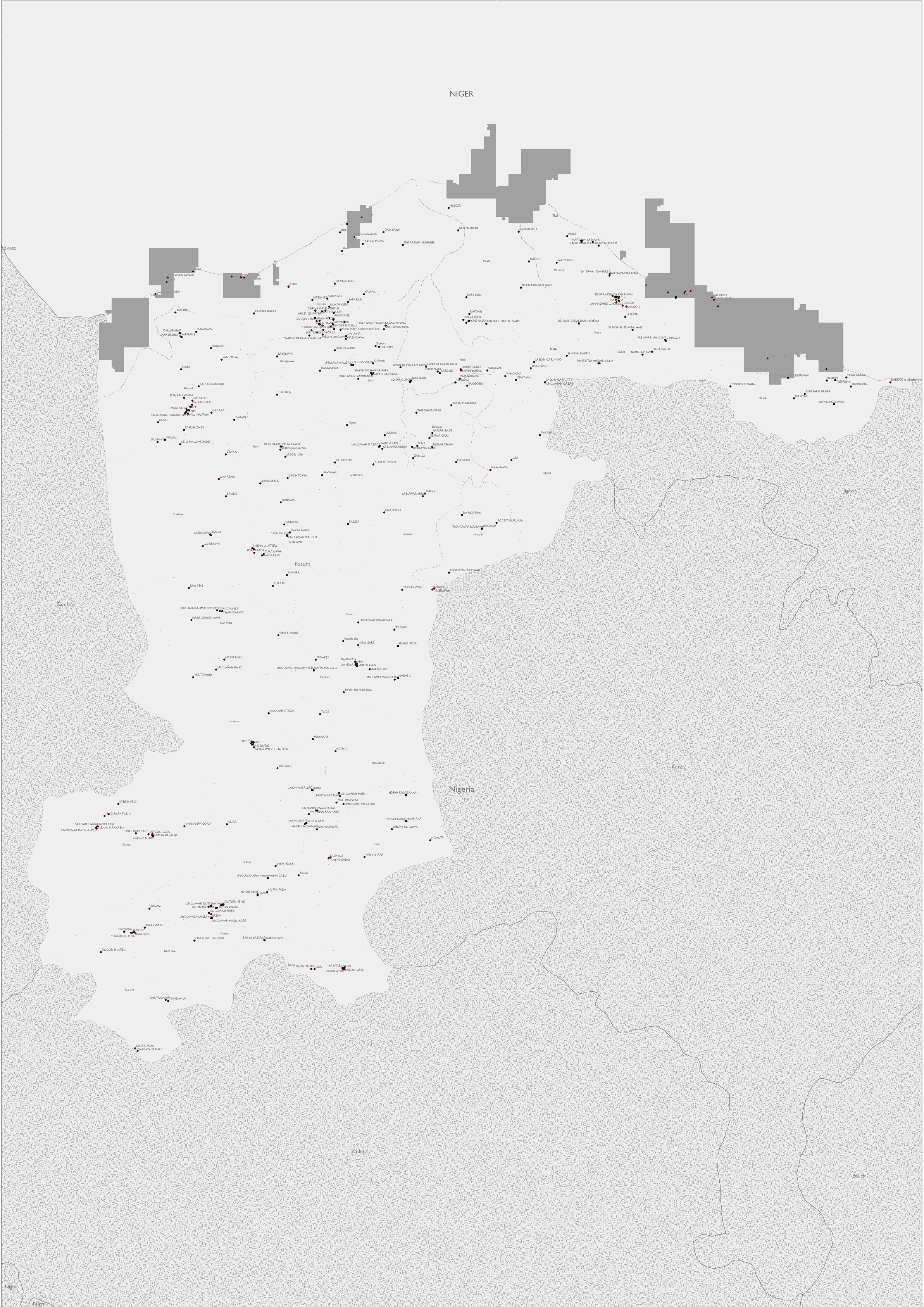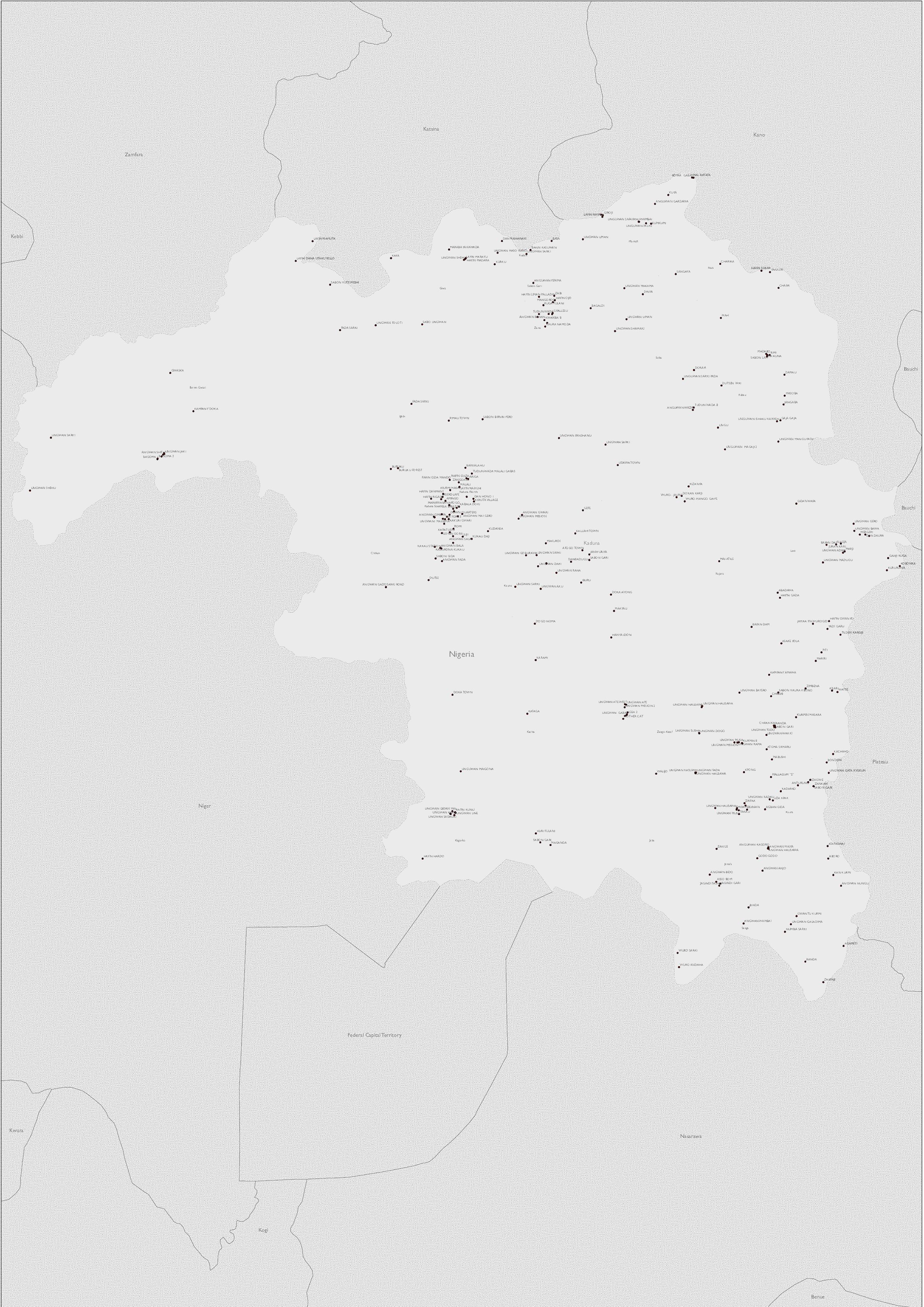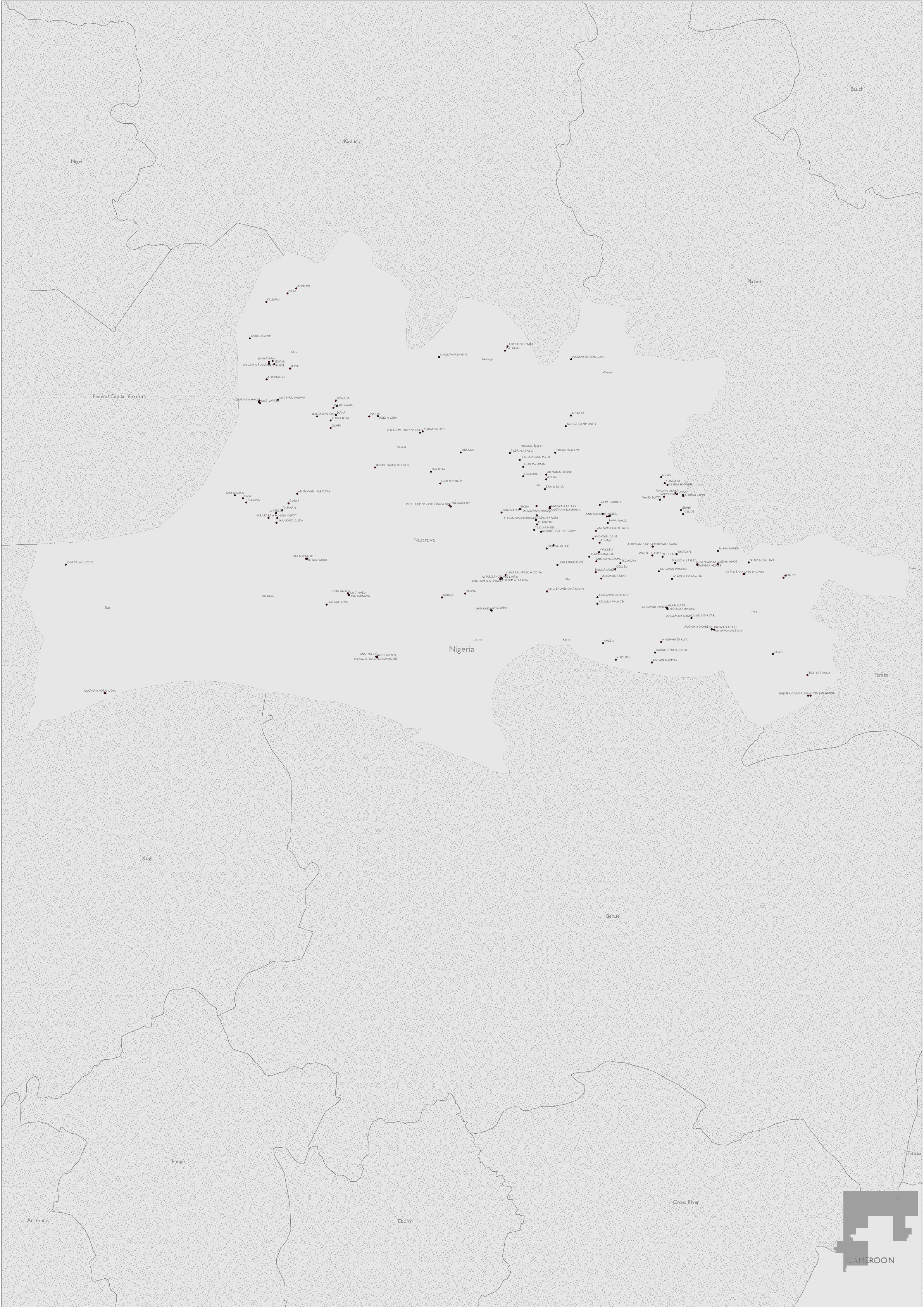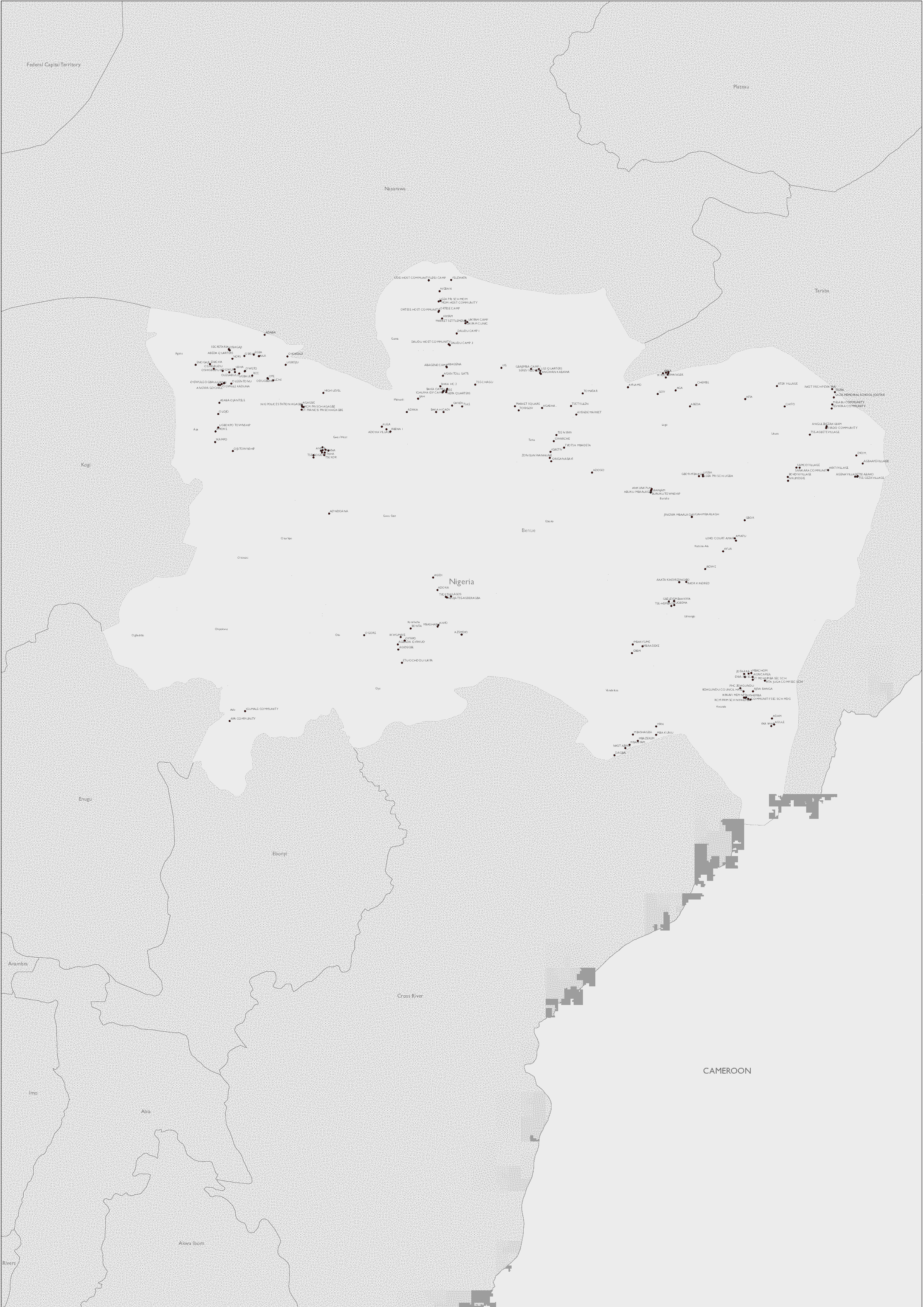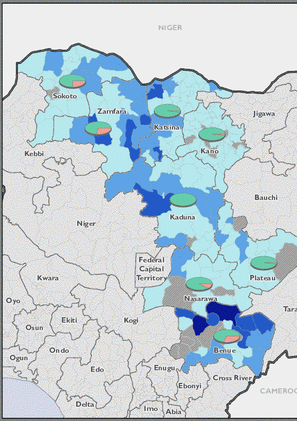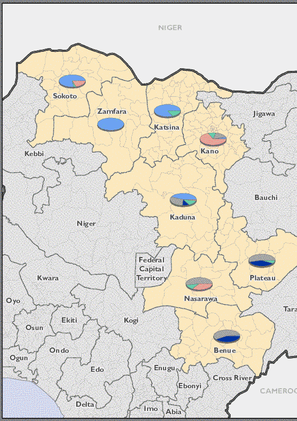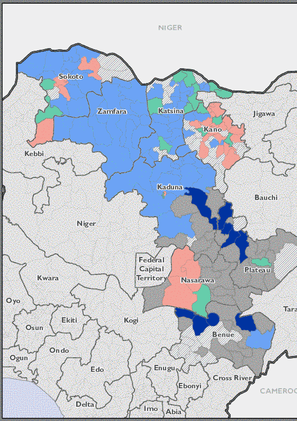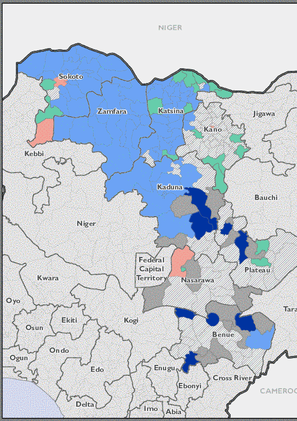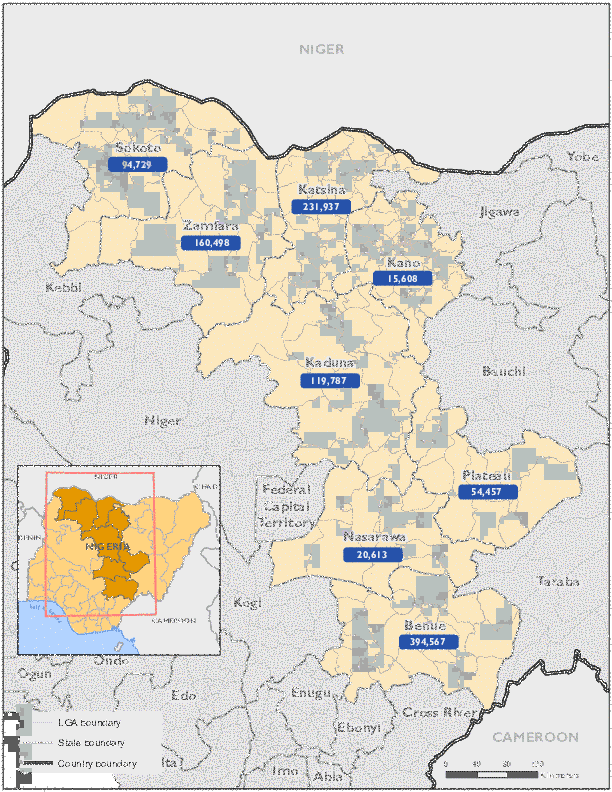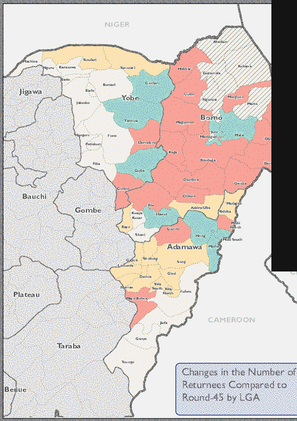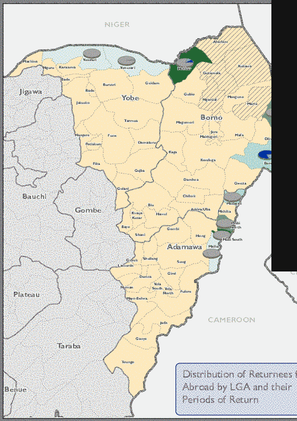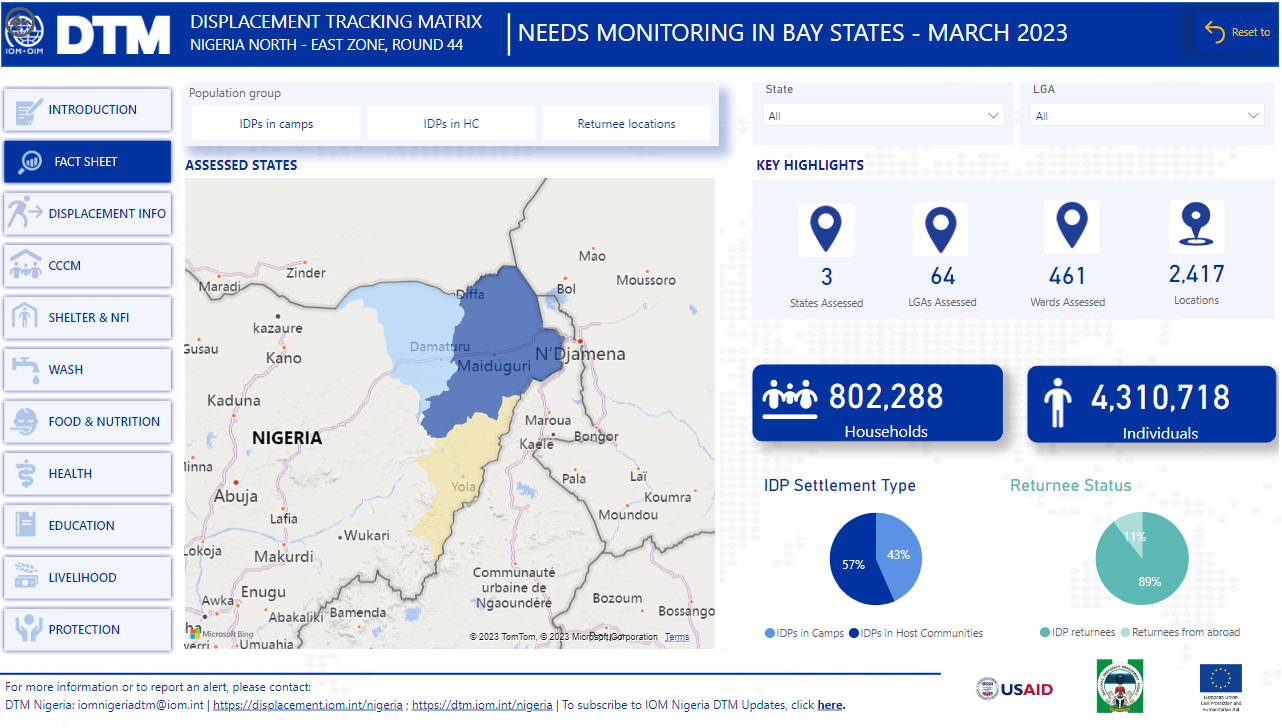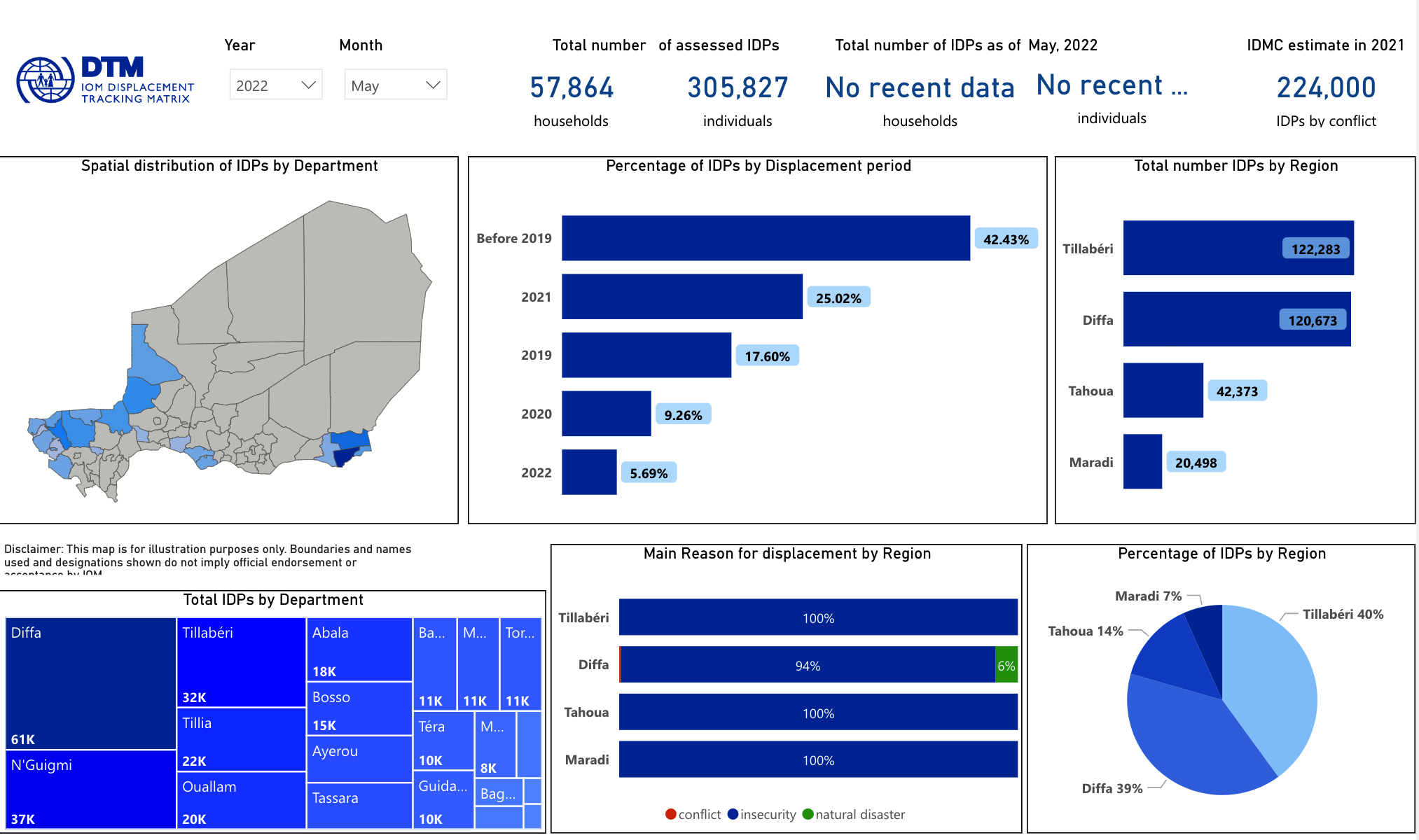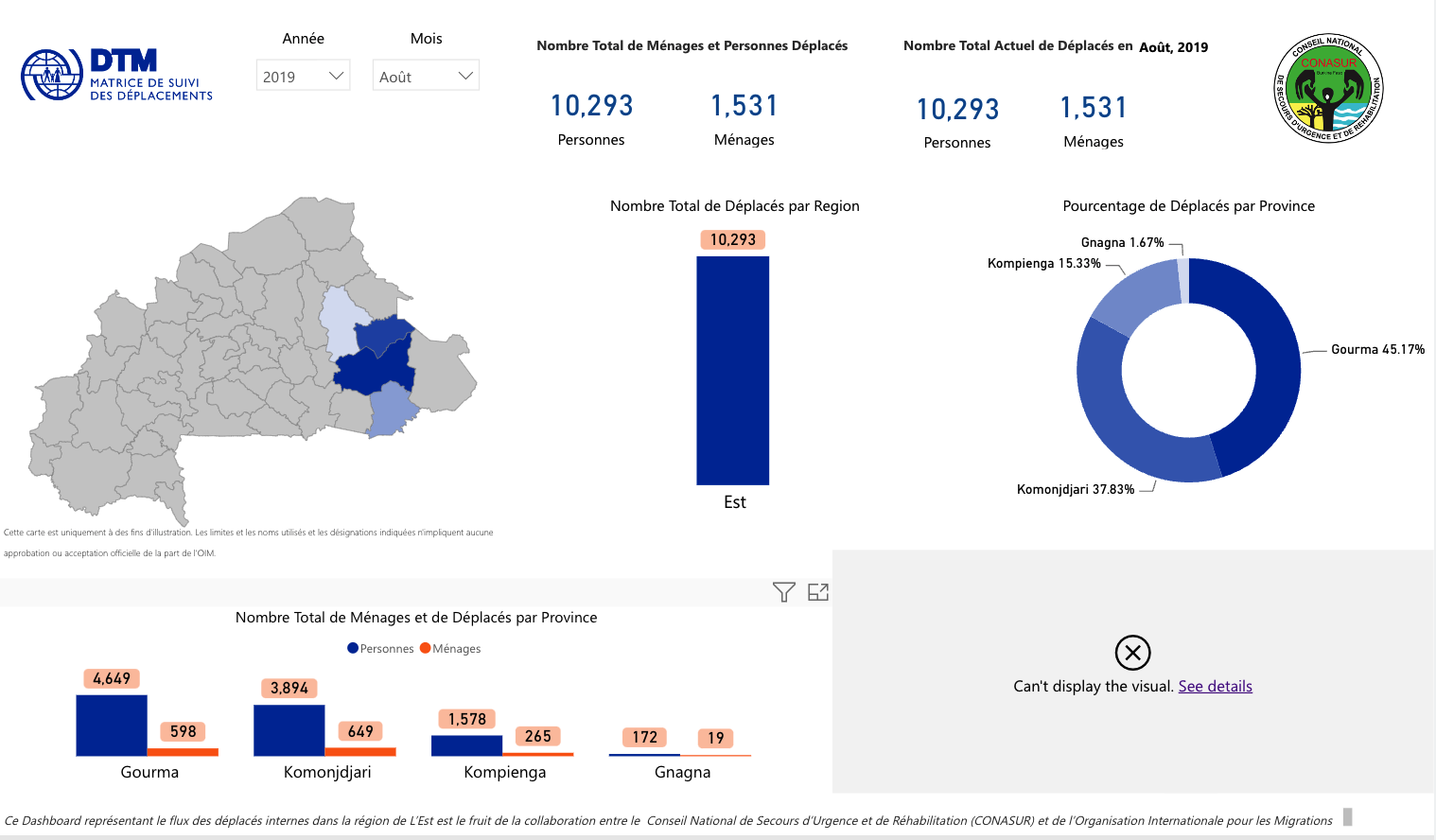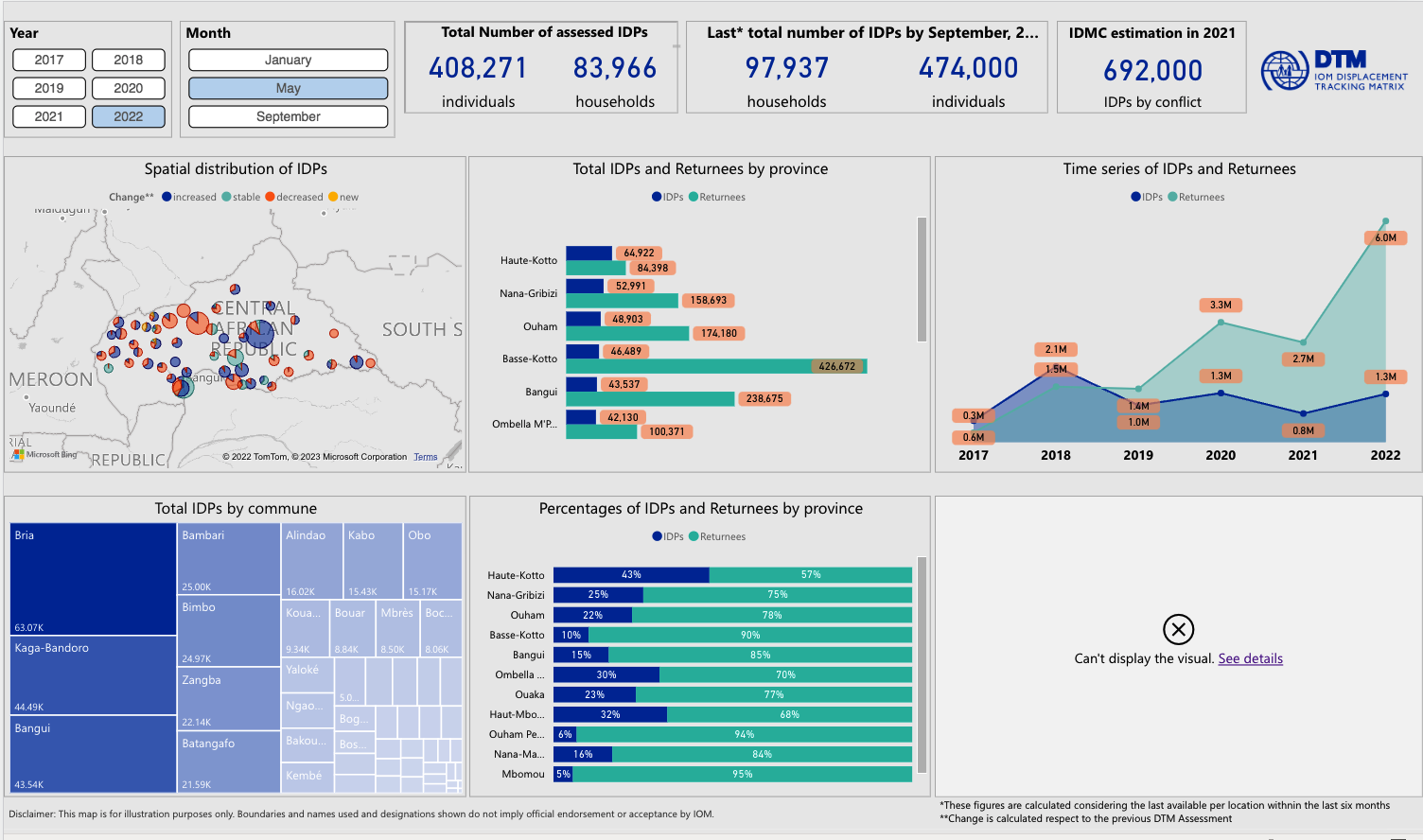-
Countries
-
Data and Analysis
-
Special Focus
-
Crisis Responses
West and Central Africa
DTM West and Central Africa
DTM Operations in the region
- Active DTM operation
- Past DTM operation
Nigeria — Emergency Tracking Tool Report 389 (15 - 21 July 2024)
Between 15 and 21 July 2024, a total of 2,615 new arrivals were recorded at locations in Adamawa and Borno states.
Nigeria — Flood and Heavy Rainfall Flash Report Borno State (24 July 2024)
On 22 July 2024, a flash flood caused by heavy rainfall resulted in significant damage to several camps within the Dikwa and Mafa local government areas (LGAs) of Borno State, including Fulatari, Government Girls Secondary School (GGSS), and Masarmari camps.
Tchad — Cartographie des mobilités sur le territoire tchadien (Juillet 2024)
Ce rapport est composé d’un ensemble de cartes présentant les différents phénomènes et tendances migratoires au Tchad. Il décrit les différents mouvements de populations recensés depuis une période donnée, vers et au sein du territoire tchadien et dresse le profil des populations en mouvement.
Nigeria — Emergency Tracking Tool Report 388 (08 - 14 July 2024)
Between 08 and 14 July 2024, a total of 1,754 new arrivals were recorded at locations in Adamawa and Borno states.
Nigeria — Emergency Tracking Tool Report 02 Benue State (08 July - 14 July 2024)
Between 08 and 14 July 2024, a total of 99 new arrivals were recorded at locations in Benue state. The new arrivals were recorded at locations in Guma and Gwer-west Local government areas (LGAs) of the conflict-affected Benue State.
Nigeria — North-central & North-west Flash Report 168 (08 July - 14 July 2024)
On 10 July 2024, armed bandits attacked the communities of Ruwan Godiya and Kwakware Na Babba in Ruwan Godiya ward of Faskari Local Governement Area (LGA) in Katsina State. There were reports of eight injuries and one fatality.
Jul 22 2024
Nigeria — North-central & North-west Flash Rep…
Mauritanie — Système d'alertes précoces liées aux catastrophes — Moughataa de Bassikounou et d'Adel Bagrou (Mars - Avril 2024)
La Mauritanie est un pays particulièrement vulnérable aux risques de catastrophes liées au climat telles que les sécheresses et les inondations.
Jul 18 2024
Mauritanie — Système d'alertes précoces liées…
Nigeria - National Displacement Profile 2023
Following the release of the first edition of PROGRESS 2023 report, the Displacement Tracking Matrix (DTM) has compiled a series of National Displacement Profiles based on end of year 2023 figures.
Jul 17 2024
Nigeria - National Displacement Profile 2023
Tchad — Réponse à la crise au Soudan: Bulletin d'informations 38 (16 Juillet 2024)
Environ 823,000 personnes ont traversé la frontière vers le Tchad depuis le début de la crise au Soudan, incluant 201,379 parmi eux sont des retournés tchadiens.
Central African Republic - National Displacement Profile (May 2024)
Following the release of the first edition of PROGRESS 2023 report, the Displacement Tracking Matrix (DTM) compiled a series of National Displacement Profiles based on end of year 2023 figures.
Chad — Situation Update 38 (16 July 2024)
An estimated 823,000 people have crossed into Chad since the onset of the crisis in Sudan, of which 201,379 among them are Chadian returnees. IOM expects this number to rise to 240,000 through to December 2024.
Jul 16 2024
Chad — Situation Update 38 (16 July 2024)
Nigeria — Biometric Registration Update Report 4 Benue State (1 July 2024)
Six LGAs have been mapped as locations with IDPs in Benue State based on DTM Round 11 (March 2023).
Nigeria — Emergency Tracking Tool Report 387 (01 - 07 July 2024)
Between 01 and 07 July 2024, a total of 1,893 new arrivals were recorded at locations in Adamawa and Borno states.
Nigeria — Emergency Tracking Tool Report 01 Benue State (01 July - 07 July 2024)
Between 01 and 07 July 2024, a total of 2,607 new arrivals were recorded at locations in Benue state. The new arrivals were recorded at locations in Agatu, Guma, Gwer-west, Logo, Nasarawa, and Ukum Local government areas (LGAs) of the conflict-affected Benue State.
Afrique de l’Ouest et du Centre — Tableau de bord mensuel sur la situation en République Centrafricaine 21 (Juin 2024)
La République centrafricaine (RCA) souffre d’instabilité depuis deux décennies.
Afrique de l’Ouest et du Centre — Tableau de bord mensuel sur la crise du Liptako Gourma 50 (Juin 2024)
La région du Sahel central, et plus particulièrement la zone du Liptako Gourma, qui enjambe le Burkina Faso, le Mali et le Niger, est témoi
West and Central Africa — Lake Chad Basin Crisis Monthly Dashboard 65 (June 2024)
The crisis currently affecting the Lake Chad Basin states results from a complex combination of factors, including conflict with non-state armed groups, extreme poverty, underdevelopment and a changing climate, which together have triggered si
West and Central Africa — Central African Republic Situation Monthly Dashboard 21 (June 2024)
The Central African Republic (CAR), which has experienced continuous volatility for the past two decades, has been riddled by a crisis which ignited in 2012 with a violent takeover of power and has developed into a com
West and Central Africa — Liptako Gourma Crisis Monthly Dashboard 50 (June 2024)
The Central Sahel area, and in particular the Liptako
Afrique de l’Ouest et du Centre — Tableau de bord mensuel sur la crise du Bassin du lac Tchad 65 (Juin 2024)
La crise dans le Bassin du lac Tchad est le résultat d’une combinaison complexe d’une multitude de facteurs, y compris un conflit armé impliquant des groupes armés non-étatiques, des niveaux extrêmes de pauvreté, un développement peinant, et d
Cameroun — Suivi des urgences 98 (05 - 08 Juillet 2024)
Ce tableau de bord présente des informations sur le déplacement de populations des localités Magaï, Moulsou, Goumaye, Gourvaye, Doulang, Bahaa, Bougoudang et Yigatongaï dans la république du Tchad qui se sont continuellement déplacées vers les localités de Vélé cente et Guémé centre, arrondisseme
Tchad — Réponse à la crise au Soudan: Bulletin d'informations 37 (9 Juillet 2024)
Plus de 780,000 personnes ont traversé la frontière vers le Tchad depuis le début de la crise au Soudan.
Tchad — Suivi des Urgences 190 (3 Juillet 2024)
Le suivi des urgences a pour but de recueillir des informations sur les mouvements importants et soudains, ainsi que sur des urgences de sécurité et climatiques.
Jul 09 2024
Tchad — Suivi des Urgences 190 (3 Juillet 2024)
Tchad — Suivi des Urgences 189 (1 - 30 Juin 2024)
Le suivi des urgences a pour but de recueillir des informations sur les mouvements importants et soudains, ainsi que sur des urgences de sécurité et climatiques. Les informations sont collectées par le biais d’entretiens avec des informateurs clés ou par des observations directes.
Pagination
Nigeria — North-central And North-west Zones Site Assessment Round 13
Jul 26 2024
<p>As of December 2023, DTM identified a total of 1,092,196 internally displaced persons (IDPs) in 183,437 households across Benue, Kaduna, Kano, Katsina, Nasarawa, Plateau, Sokoto, and Zamfara states. The data collection started in December 2023 in 1,646 locations, in the eight states of…
Nigeria — North-central And North-west Zones Site Assessment Round 12
May 20 2024
<p>Round 12 of DTM data collection in Nigeria’s north-west and north-central regions was conducted between 13 September and 24 October 2023. During the activity, DTM deployed teams of enumerators to conduct assessments in 826 wards (down from the 881 wards assessed in Round 11 of DTM…
Mali — Baseline Assessment — Round 79
Apr 24 2024
<p>During the data collection and update operation conducted in December 2023, a total of<strong> 354,739</strong> IDPs were identified. The number of IDPs indeed decreased from<strong> 391,961 </strong>individuals in September 2023 (<a href="https://dtm.iom.…
Cameroon — Extrême-Nord - Multi-Sectoral Needs Assessment (MSNA) — Round 4
Apr 17 2024
<p>The round 4 data collection was conducted between August 18 and August 29, 2023, among 5,801 households in the six departments (Diamaré, Logone-Et-Chari, Mayo-Danay, Mayo-Kani, Mayo Sava, and Mayo-Tsanaga) of the Extreme North region. This was done using a questionnaire developed by IOM,…
Cameroon — Baseline Assessment — Round 27 (Aug-2023)
Apr 17 2024
<p>Data collection for round 27 was conducted from 18 to 29 August 2023 through 3,715 key informants, accross 1,283 localities. During this round, 700,766 internally displaced individuals were identified, including 453,661 IDPs, 198,940 Returnees, and 48,165 Out-of-camp refugees</p>
Chad — Site and Village Assessment - Lac Province — Round 22
Feb 29 2024
<p>From December 22nd 2023 to January 24th 2024, the DTM Chad has conducted the round 22 of Sites and Villages assessment accross 305 locations.</p><p>During this round, a total of 261,672 displaced individuals were identified, including 219.393 internally displaced persons, 25,…
Central African Republic — Baseline Assessment — Round 20
Feb 27 2024
<p>L’évaluation a été réalisée dans <strong>4 410</strong> localités de présence des PDI et / ou retournés et <strong>77</strong> sites de déplacement. La collecte de données s’est tenue entre le 02 décembre 2023 et le 09 janvier 2024 dans les 16 préfectures du pays en…
Niger — Village Assessment Survey — Round 7
Feb 23 2024
<p>In Round 7, <strong>378 868 </strong>IDP individuals and <strong>74 358</strong> IDP households, <strong>163 611</strong> returnees and <strong>24 429</strong> returnee households were identified.</p>
Chad — Site and Village Assessment - Lac Province — Round 21
Jan 31 2024
<p>From October 5th 2023 to November 8th 2023, the DTM team in Chad has conducted the round 21 of Sites and Villages assessment accross 281 locations.</p><p>During this round, a total of 242,205 displaced individuals were identified, including 199,198 internally displaced persons…
Central African Republic — Baseline Assessment — Round 19
Sep 22 2023
This dataset presents national travel dynamics. The assessment was conducted at 4,224 locations of IDP occurrence and/or return and 79 displacement sites. Data collection took place between August 1 and September 8, 2023 in the country’s 16 prefectures in addition to the capital Bangui.
COMING SOON!!! — Nigeria — Site Assessment Round 44 (North-east) — Returnees
May 10 2023
This dataset will be available shortly for download.
Nigeria — Site Assessment — Round 44 (North-east) — IDPs
May 10 2023
A site assessment is a sub-component of mobility tracking. It aims to collect data on population presence, living conditions and needs in a particular displacement site or community. Data collection for IDPs took place between December 2022 and February 2023 in 2,482 localities in the six states…
Central African Republic — MSNA — Crise Réfugiés Tchadiens
Aug 04 2023
La zone frontalière entre le Tchad et la préfecture d’Ouham-Pendé en République centrafricaine (RCA) connaît une détérioration sécuritaire continue avec la présence de groupes armés non-étatiques et les conflits communautaires. Des conflits communautaires impliquant des éleveurs transhumants et…
Mali — Baseline Assessment — Round 76
Jul 17 2023
During the data collection and update operation carried out in December 2022, a total of 412,387 IDPs were identified. The number of IDPs has indeed fallen from 440,436 people in September 2022 (September 2022 CMP report) to 412,387 in December 2022. Thus from September to December 2022, a decrease…
Mali — Baseline Assessment — Round 77
Jul 11 2023
During the data collection and update operation conducted in April 2023, a total of 375,539 IDPs were identified. The number of IDPs has indeed fallen from 412,387 people in December 2022 (December 2022 DTM report) to 375,539 in April 2023. Thus from December 2022 to April 2023, a decrease of 36,…
Nigeria — North-central And North-west Zones Site Assessment Round 11
Jul 10 2023
A site assessment is a sub-component of mobility tracking. It aims to collect data on population presence, living conditions and needs in a particular displacement site or community. Round 11 of DTM data collection in Nigeria’s north-west and north-central geopolitical zones was conducted between…
Nigeria — North-central And North-west Zones Site Assessment Round 10
Jul 10 2023
A site assessment is a sub-component of mobility tracking. It aims to collect data on population presence, living conditions and needs in a particular displacement site or community. As of October 2022, the DTM identified a total of 1,087,875 IDPs in 180,307 households in Nigeria’s north-central…
Chad — Site and Village Assessment - Lac Province - Round 20
Sep 07 2023
This assessment was carried out in 250 locations. There was an overall increase of 2% compared to the previous round. 259,768 displaced individuals and 59,418 displaced households were identified.
Central African Republic — Baseline Assessment — Round 18
Jul 05 2023
The round 18 assessment was carried out in 4,200 localities of presence of IDPs and/or returnees and 78 displacement sites. The data collection took place between May 01 and June 08, 2023 in the 16 prefectures of the country in addition to the capital Bangui. During this round, the DTMa team…
Pagination
Nigeria — North-central & North-west — States Map Round 13 (March 2024)
Map of states in North-central and North-west Nigeria
Nigeria — North-central & North-west — Year of displacement Round 13 (March 2024)
Year of displacement
Nigeria — North-central & North-west — Number of IDPs by LGA Round 13 (March 2024)
Number of IDPs by LGA
Nigeria — North-central & North-west — Reasons for displacement by State Round 13 (March 2024)
Reasons for displacement by State
Nigeria — North-central & North-west — Reasons for displacement by LGA - before 2021 Round 13 (March 2024)
Reasons for displacement by LGA - before 2021
Nigeria — North-central & North-west — Reasons for displacement by LGA - 2021 Round 13 (March 2024)
Reasons for displacement by LGA - 2021
Nigeria — North-central & North-west — Reasons for displacement by LGA - 2022 Round 13 (March 2024)
Reasons for displacement by LGA - 2022
Nigeria — North-central & North-west — Reasons for displacement by LGA - 2023 Round 13 (March 2024)
Reasons for displacement by LGA - 2023
Nigeria — North-central & North-west — Number of IDPs per State Round 13 (March 2024)
Number of IDPs per State Round 13 (March 2024)
Nigeria — North-east — Returnees Comparison at Location Round 46 (December 2023)
Returnee comparison at the Location level. Change in the number of returnees compared to Round 45.
Nigeria — North-east — Returnees Comparison at LGA Level Round 46 (December 2023)
Returnee comparison at the Local Government Area (LGA) level. Change in the number of returnees compared to Round 45.
Nigeria — North-east — Period of Return of Returnees from Abroad at LGA Level Round 46 (December 2023)
Period of arrival of returnees who arrived from abroad.
Nigeria — North-east — Period of Return of Returnees from within Nigeria at LGA Level Round 46 (December 2023)
Period of arrival of returnees who arrived from within Nigeria.
Nigeria — North-east — Returnees by LGA Round 46 (December 2023)
Returnees by LGA.
Nigeria — North-east — IDP Reasons for Displacement Round 46 (December 2023)
IDP reasons for displacement
Nigeria — North-east — IDP Comparison at Location Level Round 46 (December 2023)
IDP comparison at the location. Change in the number of IDPs compared to Round 45.
















